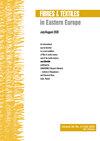羊绒纱线防缩处理参数的优化
IF 0.9
4区 工程技术
Q3 MATERIALS SCIENCE, TEXTILES
引用次数: 0
摘要
摘要羊绒纤维手感柔软,弹性好。然而,由于它的规模,它表现出收缩。以38.26特克斯的羊绒纱线为原料,采用氯化钠- kmno4处理羊绒纱线,以减少其收缩。采用正交设计和模糊综合评判法对处理参数进行优化。实验结果表明,经处理后的纱线收缩率为0.56%,比未经处理的纱线收缩率低,纱线强度比未经处理的纱线略有下降。扫描电镜可观察到处理后纱线的纤维结垢轮廓,但结垢边缘较钝且不规则。本文章由计算机程序翻译,如有差异,请以英文原文为准。
Shrink-Proof Treatment Parameter Optimisation of Cashmere Yarn
Abstract Cashmere fiber has soft hand and good elasticity. However, it exhibits shrink because of its scale. In this work, cashmere yarn (38.26 tex) was treated using NaCl-KMnO4 to reduce the shrink of cashmere yarn. Orthogonal design and fuzzy comprehensive evaluation were used for optimizing treating parameters. Experimental results showed that the yarn shrink percentage of treated yarn was 0.56% which was less than that untreated yarn, and the treated yarn strength had a little drop compared with untreated yarn. The fiber scale outline of treated yarn could be observed by SEM, but the scale edge is blunt and irregular.
求助全文
通过发布文献求助,成功后即可免费获取论文全文。
去求助
来源期刊

Fibres & Textiles in Eastern Europe
工程技术-材料科学:纺织
CiteScore
1.60
自引率
11.10%
发文量
12
审稿时长
13.5 months
期刊介绍:
FIBRES & TEXTILES in Eastern Europe is a peer reviewed bimonthly scientific journal devoted to current problems of fibre, textile and fibrous products’ science as well as general economic problems of textile industry worldwide. The content of the journal is available online as free open access.
FIBRES & TEXTILES in Eastern Europe constitutes a forum for the exchange of information and the establishment of mutual contact for cooperation between scientific centres, as well as between science and industry.
 求助内容:
求助内容: 应助结果提醒方式:
应助结果提醒方式:


